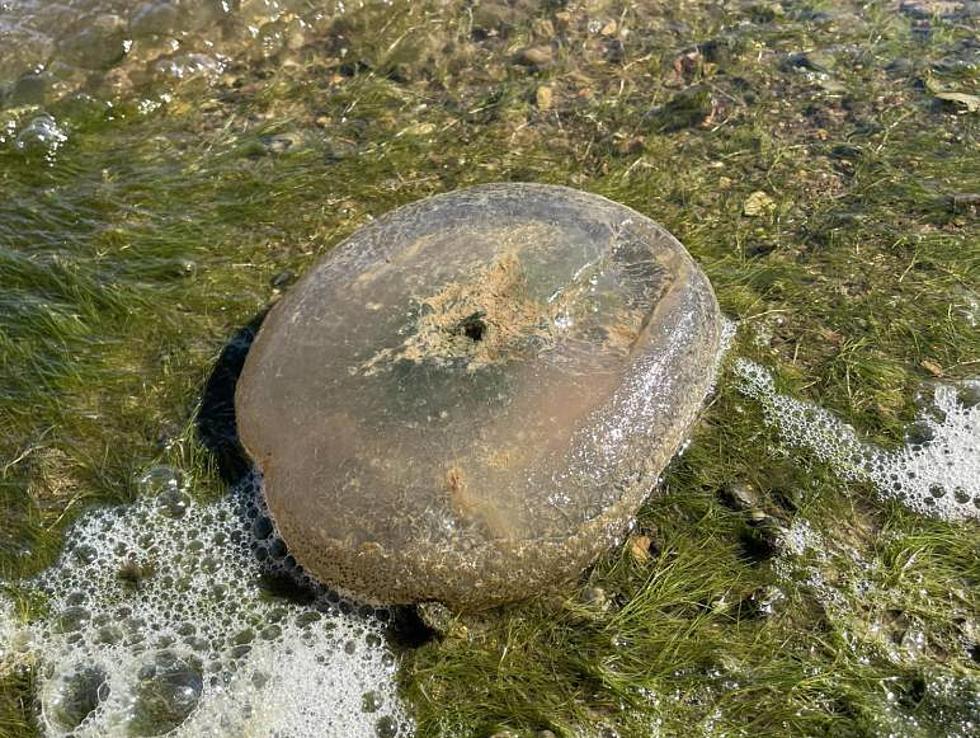
Yes, There are Some Huge Freshwater Jellyfish at Land Between the Lakes in Kentucky
John Hardin, who lives in Calhoun, just got back from a weekend camping trip down at the Land Between the Lakes in far western Kentucky. While he was there, he saw something he had never seen before. He was walking along the one of the bays and stumbled across this 'monster'. He took a photo and shared it on social media.

John asked, "Anyone ever seen anything like this? Appears to be some kind of egg sack possibly, there were several along the lake shore of another bay."
His friends quickly chimed in to let him know that what he saw may (emphasis on "may") be a freshwater jellyfish. As it turns out, those are pretty common here in the Commonwealth.
The Kentucky Department of Fish and Wildlife Resources confirms the Bluegrass State is home to freshwater jellyfish, sometimes referred to as "peach blossom jellyfish."
DO FRESHWATER JELLYFISH STING?
I asked John if he touched it and he said, "No, I didn't. I wasn't sure what it was and I didn't want to regret it."
As it turns out, freshwater jellyfish do have the ability to sting, but, unlike their saltwater counterparts, their tentacles won't penetrate human skin. That's certainly a relief.
IT'S JELLYFISH SEASON
The reason folks are seeing the jellyfish right now is because they're most commonly spotted in late summer and early fall. Freshwater jellyfish have been spotted in various lakes around Kentucky as well as in the Ohio River.
They've even been spotted in lakes in the Louisville metro area.
According to a WIKY story from 2020, you'll typically spot freshwater jellyfish in the calmer waters or Kentucky lakes and ponds. That's exactly where John saw and photographed what he thought was a jellyfish. He says, "They were all right on the edge of the water."
However, as it turns out, what John saw appears to be a bryozoan. Now, I'll admit, I had never heard of such a thing until I was contacted by another John- John Brumley with Kentucky's Energy and Environment Cabinet. He says what John Hardin photographed is a bryozoan, not a jellyfish.
What in the heck is a bryozoan? This will help.
LOOK: Stunning animal photos from around the world
Gallery Credit: Nicole Caldwell
